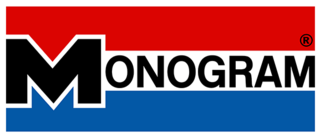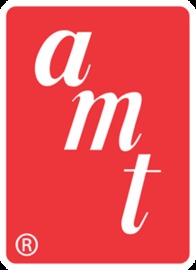
A model car, or toy car, is a miniature representation of an automobile. Other miniature motor vehicles, such as trucks, buses, or even ATVs, etc. are often included in this general category. Because many miniature vehicles were originally aimed at children as playthings, there is no precise difference between a model car and a toy car, yet the word 'model' implies either assembly required or the accurate rendering of an actual vehicle at smaller scale. The kit building hobby became popular through the 1950s, while the collecting of miniatures by adults started to gain momentum around 1970. Precision-detailed miniatures made specifically for adults are a significant part of the market since the mid-1980s.

Louis Marx and Company was an American toy manufacturer in business from 1919 to 1980. They made many types of toys including tin toys, toy soldiers, toy guns, action figures, dolls, toy cars and model trains. Some of their notable toys are Rock'em Sock'em Robots, Big Wheel tricycles, Disney branded dollhouses and playsets based on TV shows like Gunsmoke. Its products were often imprinted with the slogan "One of the many Marx toys, have you all of them?"
Dinky Toys was the brand name for a range of die-cast zamak zinc alloy scale model vehicles, traffic lights, and road signs produced by British toy company Meccano Ltd. They were made in England from 1934 to 1979, at a factory in Binns Road in Liverpool.

Revell GmbH is an American-origin manufacturer of plastic scale models, currently based in Bünde, Germany. The original Revell company merged with Monogram in 1986, becoming "Revell-Monogram". The business operated until 2007, when American Revell was purchased by Hobbico, while the German subsidiary "Revell Plastics GmbH" had separated from the American firm in 2006 until Hobbico purchased it in 2012, bringing the two back together again under the same company umbrella. After the Hobbico demise in 2018, Quantum Capital Partners (QCP) acquired Revell.

Tamiya Incorporated is a Japanese manufacturer of plastic model kits, radio-controlled cars, battery and solar powered educational models, sailboat models, acrylic and enamel model paints, and various modeling tools and supplies. The company was founded by Yoshio Tamiya in Shizuoka, Japan, in 1946.

Sieper Lüdenscheid GmbH & Co. KG, mostly known by its trade name Siku, is a German manufacturer of scale models headquartered in Lüdenscheid. Some of the products sold by Siku are model cars, figurines, model aircraft, model commercial vehicles, and model agricultural machinery. Traditionally, production was centered in Lüdenscheid, but diecast models are now made in China, the Philippines, Taiwan and Vietnam.

Monogram is an American brand and former manufacturing company of scale plastic models of cars, aircraft, spacecraft, ships, and military vehicles since the early 1950s. The company was formed by two former employees of Comet Kits, Jack Besser and Bob Reder.

Bburago is a manufacturing company of toys and die-cast scale model cars formerly based in Italy. The company was based in Burago di Molgora, where all products were made from 1974 to 2005. At the height of its popularity, Bburago's main competitors were Politoys and Maisto, the latter of which was to become dominant in the 1:18 market segment around 2000.

Aluminum Model Toys (AMT) is a toy manufacturing brand founded in Troy, Michigan, in 1948 by West Gallogly Sr. AMT became known for manufacturing 1/25 scale plastic automobile dealer promotional model cars and friction motor models, and pioneered the annual 3-in-1 model kit buildable in stock, custom, or hot-rod versions. The company made a two-way deal in 1966 with Desilu Productions to produce a line of Star Trek models and to produce a 3/4 scale exterior and interior filming set of the Galileo shuttlecraft. It was also known for producing model trucks and movie and TV vehicles.
The Auburn Rubber Company was a rubber products manufacturer best known for its line of children's toys. It was probably the largest producer of rubber and vinyl toys in the world, though Norway's Tomte Laerdal, Finland's Plasto, and Sweden's Galanite were major European producers.

The Aurora Plastics Corporation was an American toy and hobby manufacturing company. It is known primarily for its production of plastic scale models of cars, airplanes, and TV and movie figures in the 1960s. Its principal competition in modeling were various other plastic modeling firms like Revell and Monogram.
The Hubley Manufacturing Company was an American producer of a wide range of cast-iron toys, doorstops, and bookends. Toys, particularly motor vehicles and cap guns, were also produced in zinc alloy and plastic. The company is probably most well known for its detailed scale metal kits of Classic cars in about 1:20 scale. Starting in 1960, Hubley participated for a couple of years with Detroit automakers as a plastic promotional model maker. Many Hubley toys are now sought-after collectibles.

Polistil S.p.A. is an Italian toy brand and former manufacturing company headquartered in Milan, with production center in Chiari, near Brescia. Polistil specialized in die-cast and plastic scale model vehicles of all sizes.

Model Products Corporation, usually known by its acronym, MPC, is an American brand and former manufacturing company of plastic scale model kits and pre-assembled promotional models of cars that were popular in the 1960s and 1970s. MPC's main competition was model kits made by AMT, Jo-Han, Revell, and Monogram.

The Hawk Model Company is an American brand and former manufacturing company of scale model airplanes, ships, and figures, established in 1928. Headquartered in Chicago, Hawk was one of the first American manufacturers of injection-molded plastic model kits.
Product Miniature Company, or known by the acronym PMC, was a company that manufactured pre-assembled plastic promotional models cars, banks and toys in Milwaukee, Wisconsin. It was started by brothers William Edward "Ed" and Paul Ford in 1946. Car model production, the company mainstay, ended about 1965. In 1958 or 1959 the company moved to Pewaukee, west of Milwaukee, and remains there to this day, now producing other plastic promotional products, but not vehicles. Sigmunt "Zigmund" Alexander Suchorski worked as a molding machine operator for Product Miniature in Milwaukee
Marusan (マルサン) is a Japanese model and toy company. It is known as the first Japanese plastic model manufacturer and also famous for selling PVC kaiju (monster) character toys during the 1960s. Its headquarters were located in Taitō, Tokyo.
Gamda Koor, also known as Sabra was an Israeli diecast toy company that specialized in 1:43 scale cars. Most of these seem to have been original offerings, not seen elsewhere and not secondary tooling. The toy company Cragstan marketed Gamda Sabras as "Detroit Sr." for the American Market.
Fun-Ho! Toys were a brand of diecast toy cars and trucks manufactured and distributed by Underwood Engineering Co. Ltd. of Inglewood, New Zealand. Production was started by Jack Underwood about 1935 and continued until 1982. Since this time reproductions have been made also in Inglewood (Taranaki) at the Fun Ho! Toys Museum. Currently toys are occasionally cast as museum memorabilia using original molding plates and boxes. The name was always portrayed with the exclamation following Fun Ho!

Mercury was an Italian manufacturing company of die-cast scale model cars. Based in Turin, Mercury was active from 1932 until 1980. Along with Dinky Toys in England, Mercury was a pioneer in 1:43 scale diecast toys made in Europe. Today, Mercury models are rather rare and not easy to find. The company logo was the word Mercury within a rectangle with a round toothed gear behind the company name.













